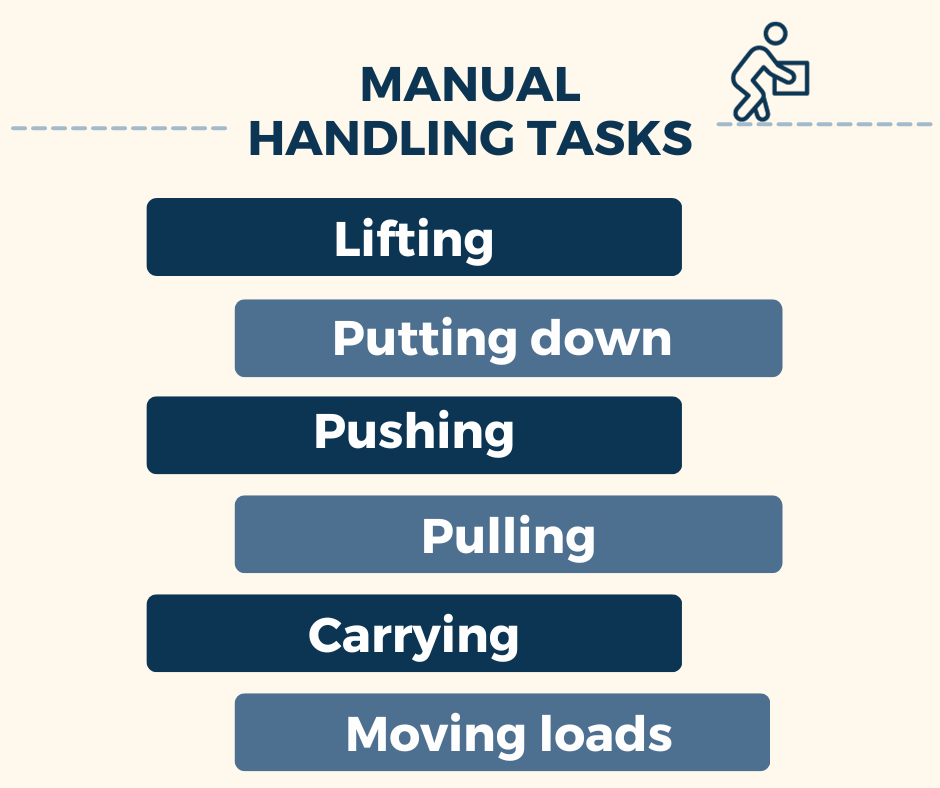As part of October’s Hazard of the Month, Construction, we’re highlighting three key areas: Asbestos Awareness, Manual Handling & Working at Height.
Asbestos Awareness
 There are three levels of asbestos training, dependent on the extent with which a worker will interact with asbestos. These are:
There are three levels of asbestos training, dependent on the extent with which a worker will interact with asbestos. These are:
- Asbestos awareness
- Non-licensable work with asbestos including NNLW
- Licensable work with asbestos
Asbestos awareness is the most common, as this applies to anyone who disturb asbestos during their normal work, or supervisors for these employees.
It is intended to give these workers and supervisors the necessary information so that they can avoid disturbing asbestos by knowing how to identify asbestos containing material and understand control procedures to be implemented when carrying out tasks that may cause them to come into contact with asbestos.
This training will not, however, prepare learners to work with asbestos-containing materials.
Many occupations will require asbestos awareness training, including but not limited to:
- Construction workers
- Maintenance workers
- Roofers
- Demolition workers
- Gas fitters
- Painters and decorators
- Plumbers
- Electricians
- Plasterers
Make sure your employees understand how to avoid asbestos with our Asbestos Awareness E-Learning Course. Get 10% off this course with the code ‘construct10’!
Manual Handling
 Manual handling is a common hazard in many workplaces, as it simply refers to moving or supporting a load either by hand or with bodily force. This definition includes:
Manual handling is a common hazard in many workplaces, as it simply refers to moving or supporting a load either by hand or with bodily force. This definition includes:
- Lifting
- Putting down
- Pushing
- Pulling
- Carrying
- Moving loads
Training is an essential part of reducing risk, however it should not be the only control in place. The first priority should be to design operations to reduce the need for manual handling wherever possible, and where it is unavoidable to ensure it is as safe as possible.
In order to be effective, manual handling training should cover the following:
- Risk factors of manual handling
- How injuries can occur
- How to use mechanical aids
- Good manual handling techniques
- Safe systems of work relevant to the worker’s tasks
- Practical work to identify and correct any incorrect techniques
Online training can help to provide a solid foundation of manual handling awareness, which can then be built on with face-to-face training to ensure that trainees are fully equipped to carry out manual handling activities safely within their role.
Learn more about manual handling safety with our Manual Handling E-Learning Course. Get 10% off this course with the code ‘construct10’!
Working at Height
 Before working at height, it should first be considered whether there is a reasonably practicable way to avoid completing the work in this way. If this is not possible, then work must be properly planned in order to prevent falls, or if the risk cannot be eliminated, to minimise the distance and consequences of a fall.
Before working at height, it should first be considered whether there is a reasonably practicable way to avoid completing the work in this way. If this is not possible, then work must be properly planned in order to prevent falls, or if the risk cannot be eliminated, to minimise the distance and consequences of a fall.
Training can help learners to to understand:
- The Hierarchy of Control: avoid, prevent, reduce
- What is classed as a dangerous height
- Risks to safety from working at height
- Safe working at height practices
- How to use and maintain working at height equipment
- The importance of fall prevention
- Procedures to prevent objects from falling
Learn more about working at height safety with our Working at Height Awareness Online Training. Get 10% off this course with the code ‘construct10’!

Asbestos Awareness, Manual Handling & Working at Height training courses are essential tools in protecting the health and safety of your employees. Make sure you don’t miss out on our 10% off deal on these courses, available until the end of October. Simply enter the code ‘construct10’ at checkout to save!
Read more Safety Spotlight blogs here
To keep up to date with the latest health & safety news and advice, follow us on social media:
